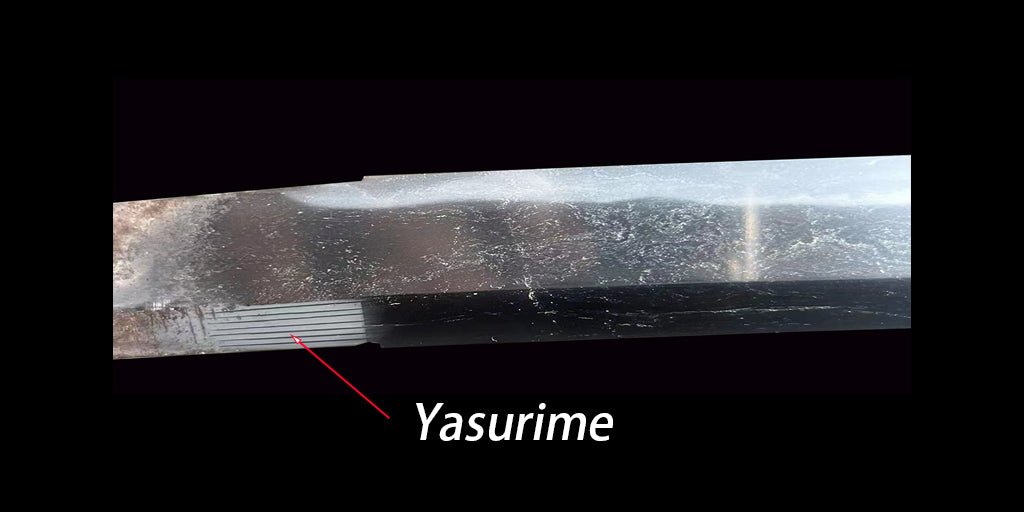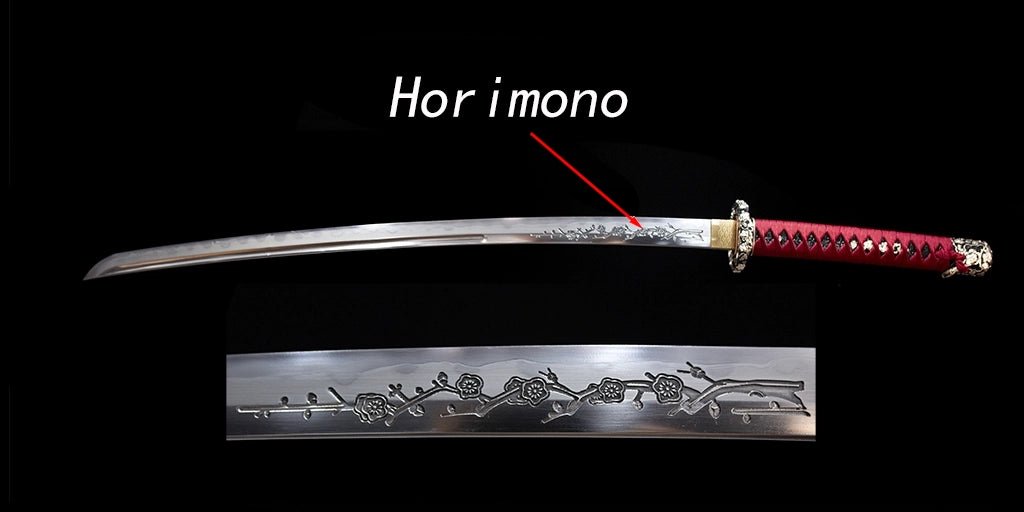Hi: Katana Blood groove
What is the groove on a katana called?
Hi is a blood groove carved into the surface of the blade, usually extending the entire length of the blade, parallel to the back. The ends of the blood grooves may have a modified shape, or they may simply be carved into the unsharpened nakago without modification.

Does blood rust a katana?
It is commonly believed that blood slots are for bloodletting, however this is not true for katana, as katana is cleave-based and does not need to be pierced too deeply when piercing. The primary purpose of the blood groove is to balance the weight of the blade, and also to reduce the weight of the blade while minimizing its strength. The secondary role is decorative. In addition, it can be used to cover up faults, and if there is a flaw in the forging of the shinogi-ji, it can be covered up by carving a blood groove. So the blood grooves are not there for bloodletting, and without blood there is certainly no need to worry about rust. Of course, since blood contains a lot of oxidizing substances, stained with blood and not cleaned up, no matter what kind of steel, as long as enough time will rust. So katana must focus on cleaning and maintenance.
There are several types of blood grooves
Bo-bo is a straight blood groove, and kakinagashi means that the blood groove is not carefully machined at the other end of the nakago, and narrows and disappears at the nakago after extending below the sharpened area of the blade.
2.BO-BI/KAKITOSHI
The bo-bi is a straight groove, while the kakinagashi is a groove that is not carefully machined at the nakago end, but extends all the way to the bottom of the nakago.
3.BO-BI WITH SOR-BI/MARUDOME
This type has a smaller parallel blood groove (soe-bi) below the shinogi line in addition to the original straight blood groove. The marudome is a type in which both grooves stop within the sharpening area of the blade and end in a circle before reaching the nakago, while the marudome extends over the entire blade but does not reach the yokote line or the tip.
5. FUTASUJI-BI/KAKUDO-ME
FUTASUJI-BI is a blade with two parallel bo-bi on the blade(double groove), and KAKUDO-ME means that both blood grooves end in a square above the nakago.
6.NAGINATA-BI WITH SOE-BI/MARUDOME
NAGINATA-BI is a distinctive blood groove commonly found on long weapons (naginata), and sometimes on tanto and katana. the large bo-bo ends above the nakago in a MARUDOME, and the front end of the bo-bi is peculiarly shaped in that the blood groove near the blade extends beyond the upper part, so that the front end of the blood groove forms an arch, and the upper part of the blade The surface (shinogi-ji) of the blade also slopes substantially toward the edge of the munemachi, corresponding to the curvature of this arch. This slant extends all the way to the tip of the blade. Below the shinogi-ji bevel, there is a longer SOE-BI below the bo-bi that extends beyond the bo-bi.




Leave a comment
This site is protected by hCaptcha and the hCaptcha Privacy Policy and Terms of Service apply.